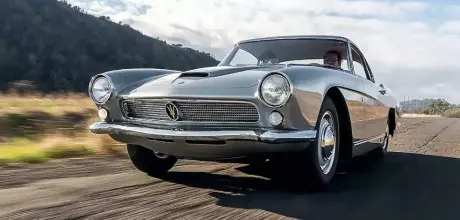1959 Maserati 3500 GT Bertone
After shying away from the limelight for decades, the unique 1959 Maserati 3500 GT Bertone took a bow at Pebble Beach last year. Massimo Delbò gets behind the wheel.
Photography Patrick Ernzen
BERTONE MASERATI
At the wheel of Scaglione’s unique 3500 GT
It would be easy to assume that everything is known about the most significant classic cars. And yet still there are gems that resurface from the realms of the long-forgotten. When they appear, you wonder how it might be that such an important piece of history could have been hidden under the radar for so long. This is exactly what many thought at last year’s Pebble Beach Concours, while admiring the 1959 Maserati 3500 GT Bertone. Chassis number 101.666 is a one-off designed by Franco Scaglione for Carrozzeria Bertone, and had been returned to its 1959 show-car status after more than 60 years.
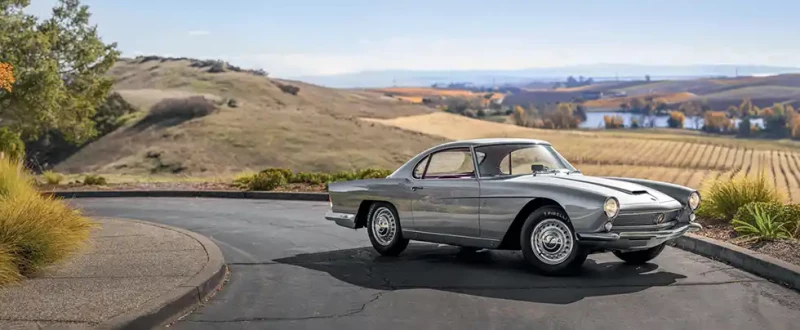
‘THE CAR INCORPORATED ASPECTS DEVELOPED BY SCAGLIONE AND BERTONE FOR THEIR BAT SERIES FOR ALFA ROMEO’
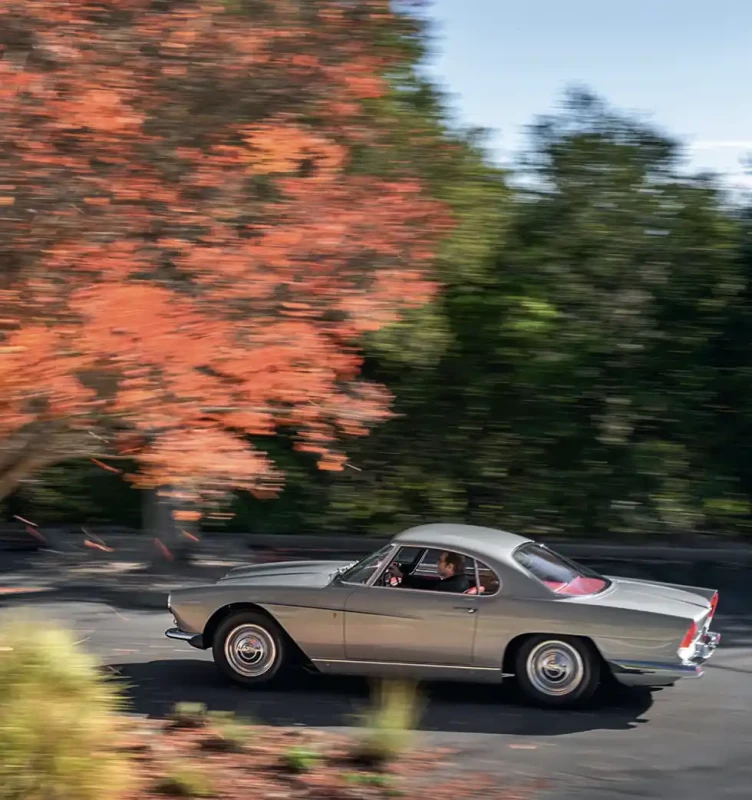
‘This unique car is an important part of Maserati history and also Bertone’s,’ says car historian Adolfo Orsi, a member of the family that owned Maserati from 1937 to 1968. ‘It is the only Maserati designed by Franco Scaglione.’ And so straight away we can see that the origins of this car are very special indeed.
‘THIS UNIQUE CAR IS AN IMPORTANT PART OF MASERATI HISTORY AND ALSO BERTONE’S’ – ADOLFO ORSI
Back in 1957, Maserati’s very first series production model made its debut. The 3500 GT was a wonderful example of the Italian granturismo concept, crafted by Carrozzeria Touring and benefiting directly from the technical excellence of the Maserati 250F, the 1957 Formula 1 World Championship winner and considered the best single-seater of its period. Only the super-exclusive 5000 GT sat above the 3500 GT in Maserati’s road car hierarchy, a special model of which only 34 were manufactured, based on the 450S racer, with bodies from eight different coachbuilders, and reserved for the likes of the Shah of Persia, Reza Palhavi, a real car guy with a taste for the ultra-exclusive.
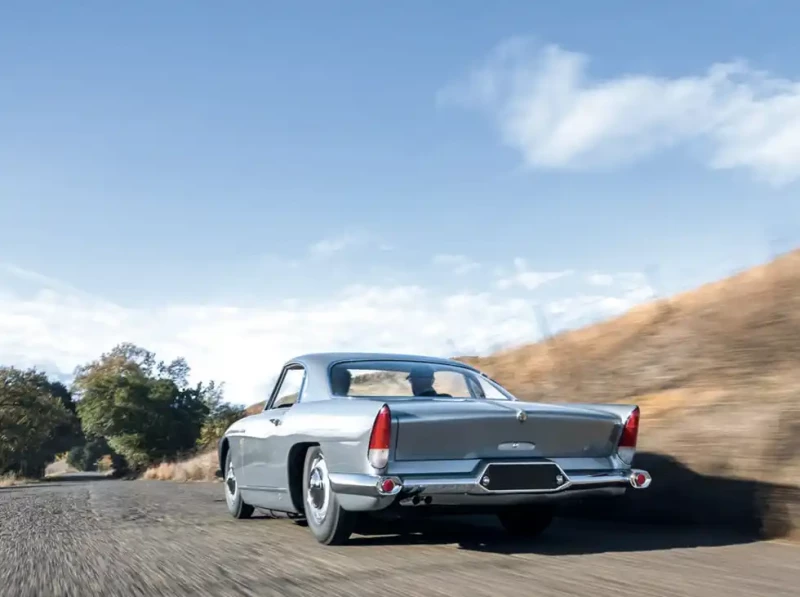
‘My father met the Shah of Persia in Livorno, Italy, on 30 November 1958,’ says Orsi. ‘With him was our engineer Giulio Alfieri, taking his request to build the fastest car in the world. It was the Shah who asked to have the 450S engine installed in a 3500 chassis. I believe my father initially decided to assign this new project to Bertone, to avoid distracting Touring from production of the standard 3500 GT, and to have another stylist, such as Scaglione, involved. During the research I carried out for the unique 3500 GT Bertone I realised there could be a logical explanation for its origins, as the first sketches for a Maserati-Bertone are related to a 5000 GT for the Shah and dated December 1958.’
He continues: ‘Unfortunately, those sketches were lost over time, but we have the letter with the specifics they had to fulfil. The car would have 280-300bhp and be capable of 250-260kph [around 160mph], it would have two comfortable seats, a capacious boot, upholstery in very good leather, extra-luxe finishing, the possibility of air conditioning, and it would be of a serious and gentlemanly appearance.’
However, it turned out that the Shah, on seeing the sketches, did not like the proposal and instead had his 5000 GT bodied by Touring. ‘What we know is that Franco Scaglione had already developed a two-door car with sports styling and a long, slightly finned tail in 1957, as a one-off Aston Martin DB2/4 Coup.,’ says Orsi. ‘He kept the same concept for the 1958 NSU Prinz Sport and we see that the same idea developed to become the 1959 3500 GT.’
It is most likely that Maserati sent a rolling chassis to Bertone in the late summer of 1959, to create a car for display at the Turin motor show in October. The car incorporated aspects developed by Scaglione and Bertone for their Berlinetta Aerodinamica Tecnica series for Alfa Romeo, and made its debut on Bertone’s stand – mere metres from the 5000 GT ‘Shah of Iran’ on Touring’s! The press reported widely, clearly impressed by the 3500 GT Bertone’s Grigio Chiaro body and House of Lords Red Connolly leather configuration, and they weren’t the only ones. Swiss Maserati dealer Martinelli & Sonvico bought the car on the spot for one of its best customers, Josef Willi of Lugano, and requested some pre-delivery modifications.
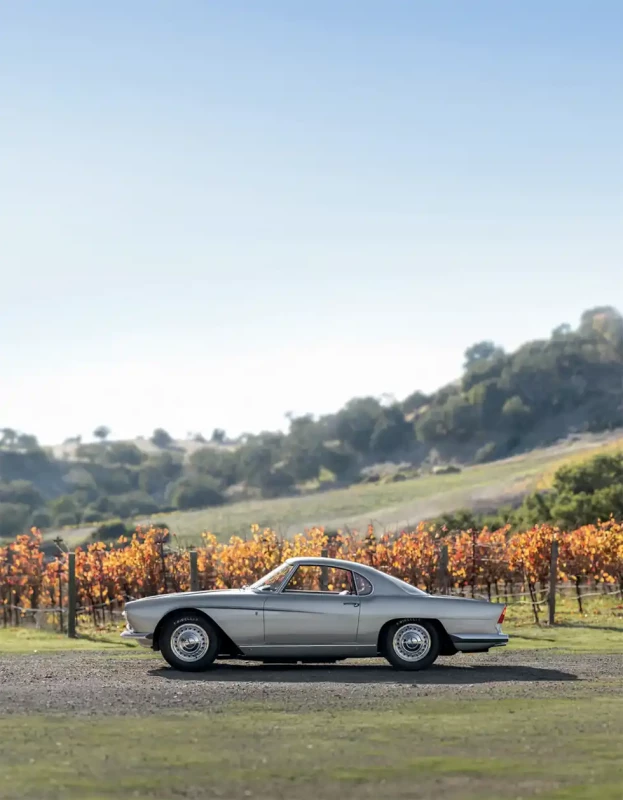
‘The order letter is dated 14 November 1959 and begins with “Following yesterday’s verbal agreement”,’ says Orsi. ‘It includes the full list of requested modifications: wire wheels with three-eared spinners, mufflers for Switzerland, Pirelli tyres, Fiamm horns and Koni rear dampers. The car was ready for collection from Bertone on 1 December, with the full invoice to the dealership for 29,615 Swiss Francs. That’s about the equivalent of €130,000 today, and it was shipped from Maserati on the fifth.’
Before shipping, a series of pictures was taken at the Maserati factory, portraying the modifications, including different front seats and upholstery and the removal of the custom luggage to make room for two traditional back seats. Yet only two weeks later, the car was back in Modena for repairs. ‘We have a series of invoices dated 15 December 1959 for works and spare parts,’ says Orsi. ‘Details included checking the front suspension, replacing the front right hub, checking the steering arm and box, tyres and wheels, a new tachometer and replacing the engine and differential oil. The car then went to Bertone, most likely for body repairs. It came back to Modena in April 1961 for an engine overhaul, including camshaft replacement and, in September of the same year, for checking the carburettors and replacing gaskets, spark-plugs and distributor, plus a repair to the exhaust mufflers.’
In August 1967 this unique car was sold to James R Thomas Jr, a US Army soldier from Portland then living in France. When he died in 1969 the car was shipped to Oregon, where it would remain untouched, poorly stored in Thomas’s mother’s open shed, from where some components were removed. In March 1978 it was bought, in pieces, by Francis G Mandarano of Seattle, Washington, the founder of the Maserati Club of America. After being alerted by the Maserati Club of Norway’s president, in March 1979 Bertone PR man Gianbeppe Panicco wrote to Mandarano to enquire whether he really had the car and to ask for pictures.
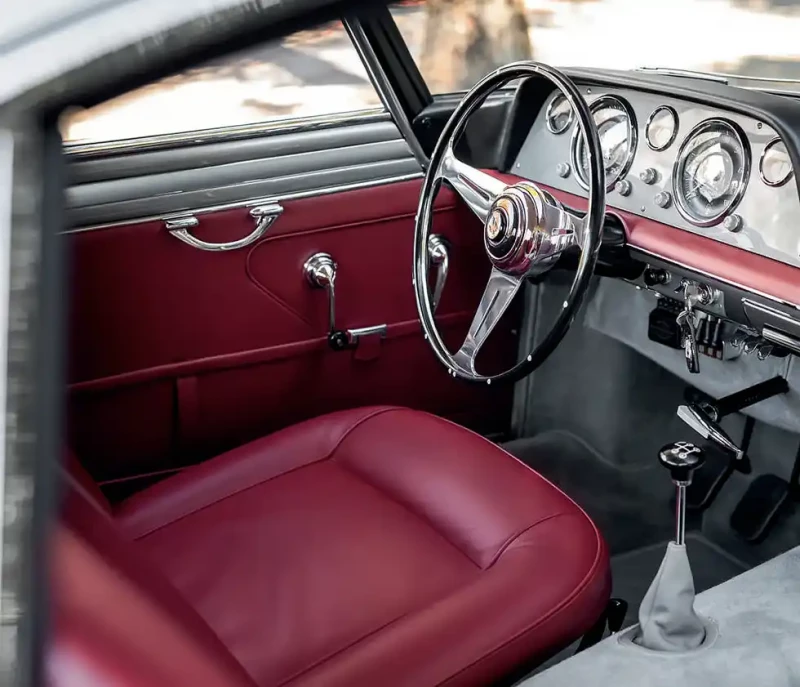
Those pictures illustrated a dismantled car, missing the engine, front bumper and rear tail-light, in need of a comprehensive restoration. The works were executed in the Mandaranos’ workshop, with little respect for its historical originality and scant attention to detail. ‘Mandarano did his best, considering the historical period and the limited information he had available,’ says current custodian Jim Utaski. ‘I recently discovered that he’d had no idea it had been the ’59 Turin show car.’
As it was, the car was shown at Pebble Beach in 1991, in the Custom Coachwork class, and was invited to Italy for the 80th anniversary of Carrozzeria Bertone in 1992. It was displayed at several Italian shows that year and appeared in a press photo with Nuccio Bertone himself. By 1996 it was owned by Joe Nicolai of Honolulu, Hawaii, and won Best of Show at the Maserati Owner’s Club Show in Monterey. Utaski, from New Jersey, bought the Maserati from Nicolai in 2013.
‘I was looking for an interesting project to prepare for Pebble Beach, and this one ticked all the boxes, in terms of rarity, brand importance, historical relevance and documented history. I’m an aesthete and always liked the shapes created by Franco Scaglione, a designer whose work I fell further in love with while researching this car. In this case it is impossible not to notice his trademark traits, such as the forward slope of the hood and the V-shaped vent, the speed streaks of the front wheelarches into the doors, the top fender pleats carried through to the rear tail-fins, the long tail for aerodynamics and the slope of the roof.’
One of the early decisions he took was how to restore the car. ‘We had two options to follow: the Turin 1959 show car configuration, or the first owner’s one. There were significant differences between the two, and this was without considering the third set of modifications applied during Mandarano’s restoration. From the Turin style, we were missing the front fender pleats, the crease from headlights to tail-lights, the Borrani disc wheels and matching Pirelli Stelvio Stella Bianca tyres, the original front bumper, the front seats, and the “no back seats” set-up with the four-piece luggage set. A further issue was the engine, because the car lost its original, number 101.666, sometime during its life and came with a block of the later GTI type.
‘It did not take long for us to realise that the first configuration was the most historically relevant. We were well set for historical references, as the car created a vivid impression when shown in Turin and we had plenty of period car magazine reports and pictures, including Road & Track, Auto Italiana and Quattroruote. We then had Viale Ciro Menotti, the magazine for Maserati enthusiasts, which covered the car several times, beginning in 1962. We even have an Automobile Quarterly portraying the car in colour PR pictures released by Bertone, taken days before the Turin show. And, last but not least, we have the knowledge, competence and passion of Adolfo Orsi, with his personal archive that provided an incredible string of information to refer to, including several pictures, as well as Maserati’s archive.’
And so in 2014 Utaski entrusted Epifani Restorations of Berkeley, California, with the work. ‘It took 5000 hours over ten years, plus a good 3000 from external contractors for specific tasks. The evidence that we did well is that we finished second in the Post-War Touring class on our debut in 2023 at Pebble Beach.’
That’s the headline result, but getting there wasn’t plain sailing. ‘There were many challenging moments during the restoration, mostly linked with the decision to save as much as possible of the original parts. The body’s metalwork was missing some “crests”, and we discovered, looking at the inner surfaces, that they had been blasted away and we had to recreate them. We had to respray the car twice, but I love the colour. It changes tone from silver when hit by the sun to grey when it is darker. ‘Another task we faced was to find a good engine, and we followed countless tracks trying to get the right unit. Then, in 2015 we performed a miracle, tracking down and purchasing Maserati 3500 GT engine number 101.668, the next down the production line from this car’s original unit. The Pirelli Stella Bianca tyres were out of stock and we wouldn’t have been able to get them without Pirelli’s help. They went the extra mile, scanning every possible warehouse around the world to provide a full set. We got them hours before shipping the car to Pebble.’
To drive, the 3500 GT Bertone understandably differs little from the standard car, and responds perfectly to controlled enthusiasm. The gearbox requires decision, but it is not challenging, and a good deal of the pleasure it provides comes from the musical engine. There is plenty of torque yet the straight-six is also happy to rev, propelling you forwards with impressive impetus.
It’s a joy to be behind the steering wheel of one of the greatest symbols of Italian manufacturing capability and automotive design, just as it would have been for the first owner, Josef Willi, who would have cruised along the shores of Lake Lugano in the spring of 1960. For those of us who understand that real elegance is very discreet, it’s time to celebrate this amazing car that was kept out of the light for so long.
‘THE STRAIGHT-SIX IS HAPPY TO REV, PROPELLING YOU FORWARDS WITH IMPRESSIVE IMPETUS’
TECHNICAL DATA 1959 Maserati 3500 GT Bertone
- Engine 3485cc OHC straight-six, three double-barrel Weber 42 DCOE 6 carburettors
- Max Power 220bhp @ 5500rpm
- Max Torque 254lb ft @ 3500rpm
- Transmission ZF four-speed manual, rear-wheel drive
- Steering Worm and roller
- Suspension Front: double wishbones, coil springs, telescopic dampers, anti-roll bar. Rear: live axle, leaf springs, telescopic dampers
- Brakes Discs front, drums rear
- Weight 1400kg
- Top speed 138mph
- Acceleration 0-60mph 7.4sec
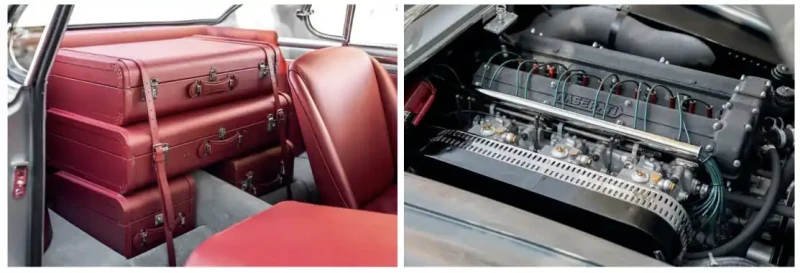
Above and opposite The unique 3500 GT Bertone began life as a proposal for the Shah of Persia’s 5000 GT; as seen on its debut at the 1959 Turin motor show.


